MONKEY SHINES AT No. 72 ST. JAMES PL (1889)
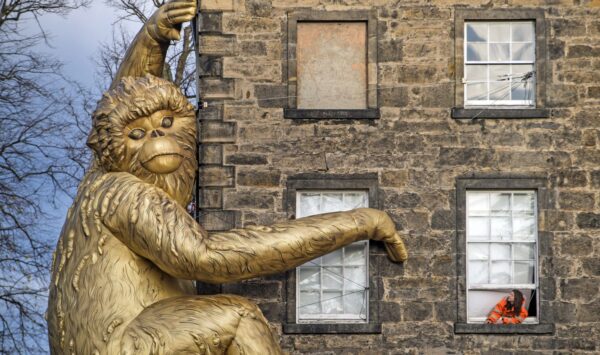
******************************************************************************************************************************** Brownstone Detectives investigates the history of our clients’ homes. The story you are about to read was composed from research conducted in the course of one of those investigations. Do you know the history of YOUR house? ******************************************************************************************************************************** A monkey in Victorian Brooklyn was not the most unusual sight to behold. In fact, the furry little creatures had been roaming the streets of the city since the introduction of the organ grinder. What was unusual, however, was waking up to one that was in “undisputed possession” of your house. ACT I – THE CREATURE APPEARS One Sunday morning in the summer of 1889 at the residence of Mr. William C. Mellins, No. 72 St James Place, Brooklyn, and in that of his next-door neighbor, lawyer William H. Morse, a disturbance of a sort took place. The 2-story and mansard brick residences of Messrs. Morse and Mellins sat, at the time, in a very rustic setting. They were “in the middle of a little block of five buildings, which have vacant lots on either end and a fruit orchard in the rear.” Well, late on a Saturday evening, Mellins happened to be drawn to a sound at his second-story front window. When he went to investigate, he looked toward the sounds, which appeared to be coming from his window. What he saw caused him to wonder if he were seeing things. There returning his gaze was a monkey clinging to his windowsill, looking into the room. Then, as quickly as […]
BURGLAR-ON-A-SHELF, No. 1141 DEAN ST (1911)
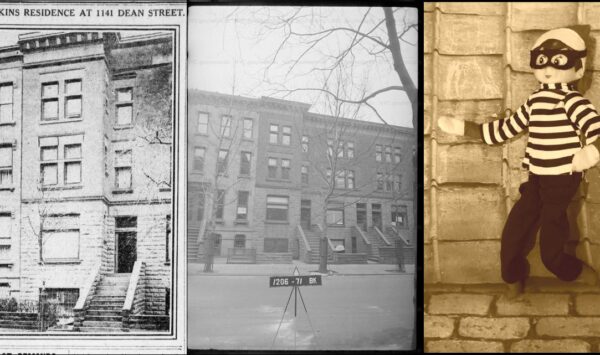
******************************************************************************************************************************** Brownstone Detectives investigates the history of our clients’ homes. The story you are about to read was composed from research conducted in the course of one of those investigations. Do you know the history of YOUR house? ******************************************************************************************************************************** Nearly a month after Christmas of 1910, a daring brownstone burglary occurred. (Or, at least, it was thought to have come to pass.) The incident took place in a fashionable neighborhood of Brooklyn – where such acts are rarely mentioned (outside of the servants). The burglar was never discovered, although a large number of police reserves and detectives had responded to the call and combed the house and the neighborhood. The police never solved the crime – nor did they even prove that it had ever taken place. But their presence on the upper-crust street caused quite the hubbub where many upstanding residents lived – many of whom feared their residence would be the next target. NOW YOU SEE ME, NOW YOU DON’T “The police of the Grand avenue station are to-day stil investigating the circumstance surrounding the calling out of the reserves and detectives to 1141 Dean street, the residence of J. C. Hipkins,” noted the Brooklyn Daily Eagle on 21 January 1911. Hipkins, whose full name was John Clifton Hipkins, was an insurance broker who lived in a “fashionable” neighborhood, the residents of which, the Eagle said, were “still agitated over the occurrence, which transpired about 5 o’clock Thursday afternoon. “The Hipkins residence,” the paper continued, “is just across […]
WOMAN ON A LEDGE AT No. 97 MACON ST (1953)
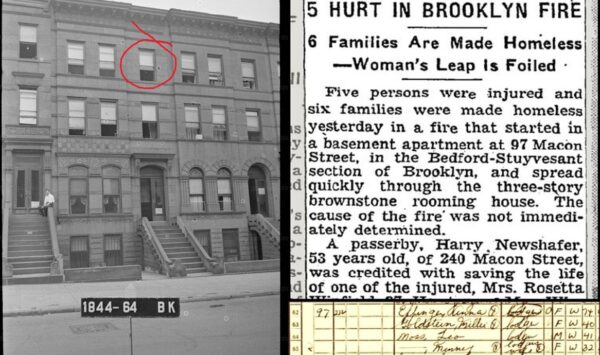
******************************************************************************************************************************** Brownstone Detectives investigates the history of our clients’ homes. The story you are about to read was composed from research conducted in the course of one of those investigations. Do you know the history of YOUR house? ******************************************************************************************************************************** All houses have a history. Those of a certain age clearly have it in spades. One part of any house’s history are those incidents that occur without planning or preordination. They can be unpleasant to know. One of those unplanned incidents, is the housefire of unknown origin that spreads uncontrollably through a residence. One such fire which spread throughout a building, took place on a cold January day in 1953 in a rooming house on Bedford-Stuyvesant’s No. 97 Macon Street. FROM A SINGLE-FAMILY TO A ROOMING HOUSE By 1953, Bedford-Stuyvesant’s brownstone stock was ageing – and it was not doing so gracefully. A large percentage of this section of Brooklyn’s brownstones had passed their semicentennial and were still wired and plumbed as they had been when they were constructed. While many of them had been maintained through the first 30-40 years, as earlier owners moved out and were acquired by owners who began to rent out rooms, however, these newer owners put little money into their maintenance, preferring to squeeze as much profit as possible out of their rent rolls. The Depression-era programs of redlining and blockbusting brought many unsavory characters into the business of making money through the purchase and management of brownstones in black-majority sections – as well as […]
THE PLAN TO SEGREGATE BED-STUY (1937)
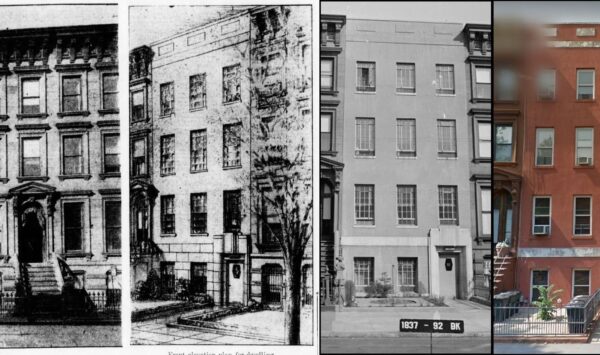
******************************************************************************************************************************** Brownstone Detectives investigates the history of our clients’ homes. The story you are about to read was composed from research conducted in the course of one of those investigations. Do you know the history of YOUR house? ******************************************************************************************************************************** In 1937, much of Brooklyn’s brownstone stock was reaching its limits. Its townhouses were, on average, approximately 50 years old and, in the eyes of many residents and brokers, outmoded of interior and unattractive of exterior. In fact, residents of certain sections of Brooklyn were beginning to move out of the older sections with the ancient brownstones, in favor of the newly constructed apartment buildings – or simply to other outlying sections of the borough. There were those residents, however, who felt that they saw a bigger problem, an over-arching trend that, unchecked, had the potential to destroy investment, send house values spiraling downward, and force them to move out of a community where they – and their families – had lived for generations. For these residents, the problem fell less into the category of an ageing housing stock than into that of the lot of outsiders – those of a different economic class, certainly those of a different race – who were already beginning to move into them. The problem of the outdated housing stock, while real, was not the sole impetus to modernize. Rather, that incentive came from a fear of an undesirable population that must, at all costs, be kept at bay. It was, thus, that a move […]
HOW TO MOVE A ROW OF BROWNSTONES (1905)
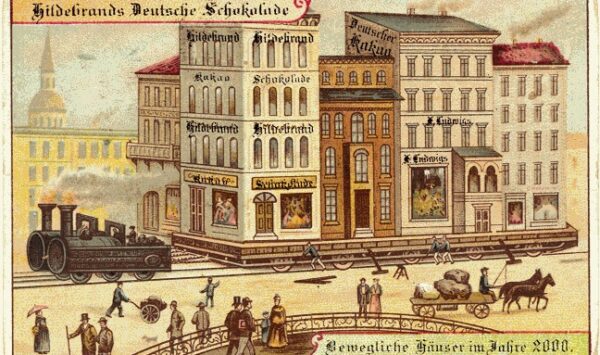
******************************************************************************************************************************** Brownstone Detectives investigates the history of our clients’ homes. The story you are about to read was composed from research conducted in the course of one of those investigations. Do you know the history of YOUR house? ******************************************************************************************************************************** It was called “one of the most unusual examples of housemoving” ever. Up until 1905, no one had ever attempted it. And it was moving two rows of five Brooklyn brownstone houses together, as a row each, one, across the street, and one across a block AND a street. Contractors, experienced in the business, had – to this point – only moved much lighter frame houses, even rows of frame house. But a row of brownstone houses? Impossible! Over a course of several weeks, though, two rows of brownstone houses were jacked up, stabilized – and then rolled away. These same brownstone houses now sit across the street on Jefferson Avenue – as though they had always been there. MAKING WAY FOR THE EXTENSION It all started in the Bedford-Stuyvesant section of Brooklyn, when the State of New York decided it needed more room for an extension to an armory it owned on Sumner Avenue. The armory, bound by Sumner Avenue on the west, Putnam Avenue on the north, and Jefferson avenue on the south, could only expand in one way – into two rows of brownstones. Behind the armory, on Putnam Avenue, sat a row of brownstones from the 1880s, while, on Jefferson Avenue, a more recent vintage of brownstones […]
SPEEDING DRIVER, OVERTURNED CAR (1931)
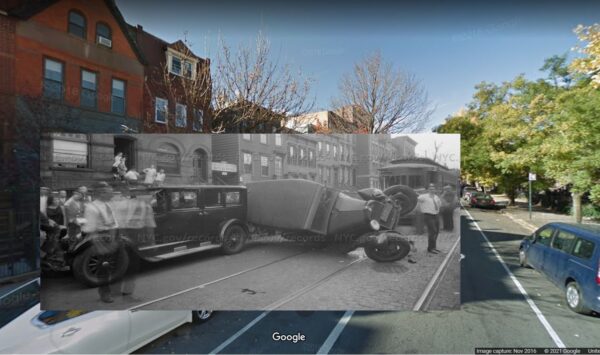
******************************************************************************************************************************** Brownstone Detectives investigates the history of our clients’ homes. The story you are about to read was composed from research conducted in the course of one of those investigations. Do you know the history of YOUR house? ******************************************************************************************************************************** The guilty one was evident. The accident was seen by at least 40 trolley riders, several automobile drivers, and a number of pedestrians, on Bergen Street near Bedford Avenue. It was around 8 p.m. on A Friday. A laundry truck had been motoring east on Bergen Street when its chauffeur, possibly eager for the weekend, attempted to pass a trolley car ahead of him that was going (too slow, likely for the chauffeur) in the same direction. As the laundry truck cleared this trolley car, however, its chauffeur became suddenly aware of a westbound trolley car bearing down on him in his direction. There was no time or space to change direction of the automobile and the two vehicles collided at a relatively high rate of speed. The force of the collision threw the truck into the path of the eastbound trolley that the chauffeur had just tried to pass, which also ended up striking the laundry truck, itself. It was unknown whether the laundry truck chauffeur was injured as he didn’t stick around long enough, fleeing the scene, according to the police, about as soon as his truck had found its final resting place. According to the Brooklyn Daily Eagle, nine passengers on the two Bergen Street trolley cars were […]
EDGAR ALLAN POE’S ODE TO POLK (1844)

******************************************************************************************************************************** Brownstone Detectives investigates the history of our clients’ homes. The story you are about to read was composed from research conducted in the course of one of those investigations. Do you know the history of YOUR house? ******************************************************************************************************************************** A more improbable story you may have never heard – but Edgar Allan Poe may have been partially responsible for electing James Polk president. A TEA STORE, A FRIENDSHIP, AND THE WHITE EAGLE CLUB… Remembered from the campaign year of 1844, erstwhile actor and artist Gabriel Harrison recounted for the Brooklyn Daily Eagle his encounter with Edgar Allan Poe. Harrison had met him one evening as the latter was peering through the plate-glass window of his tea store. “It was in the Fall of 1843 or ’44 that I first became acquainted with Poe,” Harrison mused. “At that time I was the President of the White Eagle Club, New York, and kept a tea store on the southeast corner of Broadway and Prince street, then Mr. William Niblo’s property. “One evening I observed a person looking intently through my windows at a display of some Virginia leaf tobacco. After some minutes he entered the store, spoke of the beauty of the leaf and its quality. He took a very small bit of it in his mouth, and further remarked that he might be considered a small user of the Solace. In a few days after he called again. “On this occasion I was endeavoring to compose a campaign song for my […]
“SHAKESPEARE’S GHOST” AT 437 HALSEY (1889)
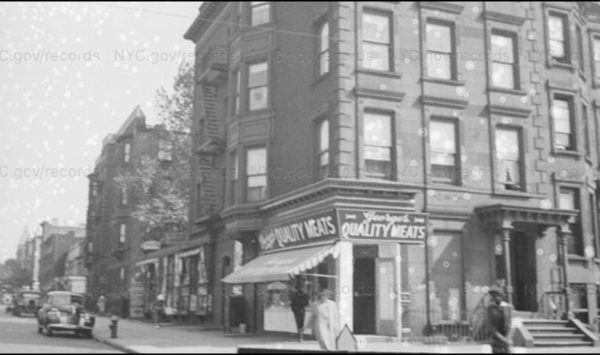
******************************************************************************************************************************** Brownstone Detectives investigates the history of our clients’ homes. The story you are about to read was composed from research conducted in the course of one of those investigations. Do you know the history of YOUR house? ******************************************************************************************************************************** The Brownstone Detectives investigates the histories of our clients’ old houses. In the process, we have come across no small number of incredibly juicy stories featuring the houses and their lineage of occupants. Every once in a while, those stories – as stories sometimes do – feature a topic we rarely wade into – the paranormal. While most properties we investigate do not involve the supernatural, it is even rarer still to find an old brownstone that comes with a thoroughly debunked ghost story. No. 437 Halsey Street – in the Bedford Stuyvesant section of Brooklyn – is one of those houses… ***************************************************************************************************** In late 1889, during a strong snowstorm in the City of Brooklyn, word began to get around about the “haunting” of an apartment house at the corner of Halsey Street and Lewis Avenue, along with its complement of frightened and fleeing former residents… “…the snow was blowing everybody in doors yesterday,” started the Brooklyn Daily Eagle, setting the scene for its readers of “an ambitious little ghost story-started out on its career of making trouble. The “trouble” mentioned in this story was the reaction that the rumor of ghosts in the apartment house had engendered. It brought to the sole remaining occupant of the structure a whole host […]
ROMEO & JULIET “COME TO” BROOKLYN (1866)
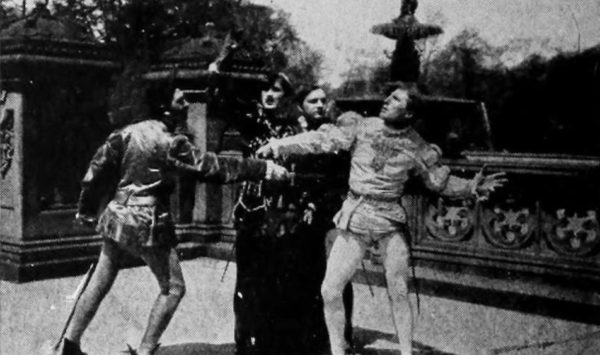
******************************************************************************************************************************** Brownstone Detectives investigates the history of our clients’ homes. The story you are about to read was composed from research conducted in the course of one of those investigations. Do you know the history of YOUR house? ******************************************************************************************************************************** The City of Brooklyn’s street grid system was still in its infancy in 1860, some 25 years after it had originally been laid out in Brooklyn maps in 1835. As builders began to buy up land, and as city elders watched the progress of speculative construction move continuously eastwards, it became apparent that some adjustments to the street grid were going to be necessary. SHAKESPEARE TO THE RESCUE Throughout the early 1860s, various New York State legislators from Kings County – likely in consultation with builders, land owners, and lawyers – began to plan these adjustments. These adjustments would come into being in two ways: 1) as extensions of certain streets through land that had originally been planned for building purposes, as well as 2) the closures of certain other portions of streets that had made other parcels of land unusable for building purposes. Thus, a legislative amendment to the Commissioners’ Map of the City of Brooklyn was in the works, and Brooklyn senators, having consulted professionals on the proposed changes, got to work on the wording to make the needed adjustments. In the end, six adjustments would be proposed – one of which was the creation of the very Shakespearean street moniker, Verona Place. “WHAT’S IN A NAME?” Considering the […]
THE LOST ART OF MOVING HOUSES (1900)
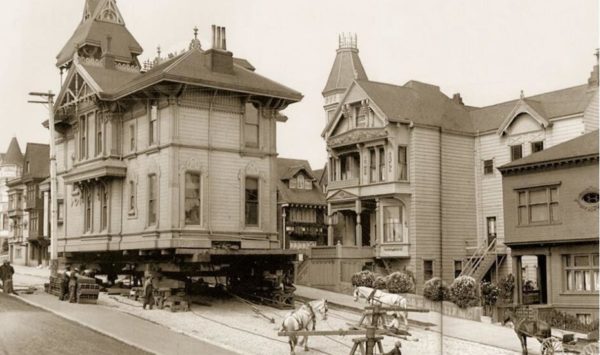
******************************************************************************************************************************** Brownstone Detectives investigates the history of our clients’ homes. The story you are about to read was composed from research conducted in the course of one of those investigations. Do you know the history of YOUR house? ******************************************************************************************************************************** An article in the 28 March 1900 edition of the Brooklyn Daily Eagle caught our eye the other day. It detailed an old practice of moving houses, and it took place in a time when the economics were such that their transport to another lot made more fiscal sense than tearing them down wholesale. In this story, however, the time it took to move this particular house took a toll on the neighboring residents. And, at one point, they gathered to tear the house down, themselves… THE HOUSE IN THE STREET The story took place in the early part of 1900 in Flatbush at the corner of Flatbush Avenue and Linden Boulevard. The subject was a frame structure that was being moved from that corner, although not quickly enough for local residents who protested the house’s temporary location on Linden Boulevard. And by “on Linden Boulevard,” we mean on the actual roadway itself. “A frame building stands in the middle of Linden boulevard, at its junction with Flatbush avenue. The building bears the sign of Vanderveer & Williamson, real estate agents,” the reporter started his story. Vanderveer & Williamson, we discovered – through combing the newspaper’s archives – were Adrian Vanderveer and Adrian N. Williamson, who had, by this point, had […]